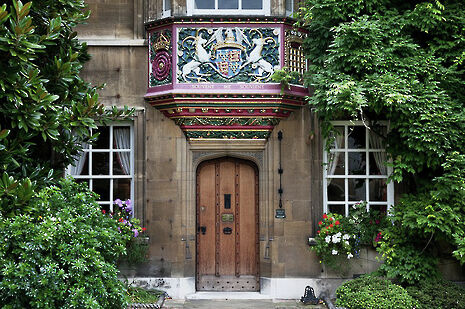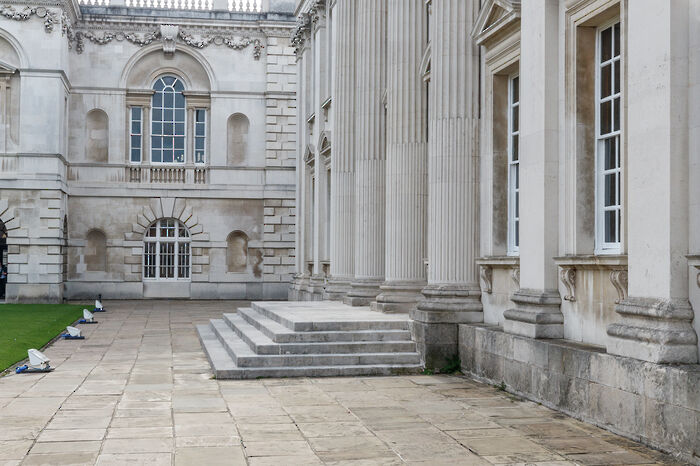Exclusive: Christ’s and Pembroke victorious over Trinity in Tompkins Table
The exam rankings by college was able to include all undergraduate exam results this year despite the introduction of the simple Class Lists opt-out

Christ’s has unseated Trinity College, bringing to an end its seven-year reign at the top of the Tompkins Table, the annual ranking of Cambridge’s 29 colleges by undergraduate Tripos exam performance. Christ’s saw 37.1% of its students awarded first-class degrees.
Trinity dropped to third place in the Tompkins Table, its lowest ranking in eleven years, as Pembroke rose to second place while recording the highest percentage of first-class degrees of any college, at 37.2% of its undergraduate student body.
Lower down in the table, Peterhouse rose six places from 2017 to a fourth-place finish, while St Catharine’s rose nine places, from nineteenth to tenth place. Lucy Cavendish saw the most dramatic change on 2017 of any college, as it fell ten places, to twenty eight. Emmanuel recorded its lowest ranking in at least twenty years, ending in ninth place.
Click here to view this year’s table.
The simple opt-out option for Class Lists, introduced for the first time in the 2018 exam cycle, had previously cast doubt as to whether the Tompkins Table could continue with almost 40% of students having opted-out from their results being made public both online and on boards outside of Senate House. Several college senior tutors believed that the Table could not continue in the age of a simple opt-out system.
However, Peter Tompkins, who had created the Table annually since 1981, said to Varsity that this year he was unable to see results and calculate the Table himself, and instead asked a college tutor “who has access” to the results of all students – including those who opted-out – to make the calculations, wherein Tompkins “supplied the formula, and they had the data”.
Tutorial offices of all colleges were provided with two versions of the Class Lists: one, available to be published publicly which excluded students who had opted out, and a second confidential version with the full results of all students.
Is Cambridge’s exams structure out of touch with reality?
Write for Varsity and have your say. Just email our Opinion team with a 100-word pitch.
“Some people within the University would rather these tables wouldn’t get produced”, Tompkins added, “but there are other people who would rather they were”.
Tompkins confirmed that the class list opt-out system required him to adjust his method of sourcing data on results, but said that in years past, he has “collaborated” with various people “within the University” in obtaining exam results before they were made public in the Cambridge University Reporter.
Peter Tompkins also added that following the publication of last year’s Table, he suggested that Christ’s had emerged as “a good challenger to Trinity”, which “has proved to be the case” this year.
Christ’s Senior Tutor Dr Robert Hunt noted that although the College is “careful not to put too much emphasis on the table” due to narrow margins between colleges, that the College’s ranking suggested students were “naturally highly motivated about their subject”, arguing, “we certainly don’t place undue pressure on our students to do well”.
Christ’s JCR also reflected on the College’s standing, saying: “While I am immensely proud that the results reflect all the hard work students at Christ's have put in this year and the strength of the support network in the student community, I would also like to reflect on how disappointing it is to see how consistency in the table positions show there is still a long way to go in equality between colleges.”
The Tompkins Table typically sees narrow margins of difference between both overall scores and proportions of firsts for the majority of colleges, which continued to be the case this year. Colleges ranked between fifth and fourteenth place all fell within two percentage points of each other in their overall scores, and within four percentage points in proportions of firsts.
Speaking to Varsity on the results, President of Lucy Cavendish Jackie Ashley said that “for small colleges like Lucy Cavendish, the marks of just one or two students can have a significant effect on placing in the Tompkins Table”. She also noted that the percentage of students awarded firsts and 2.1 degrees rose from 73% in 2015 to 92% this year.
The Table uses a formula which scores five points for a first, three points for a 2.1, two points for a 2.2, and one point for a third, so therefore colleges with larger undergraduate intakes are less susceptible to drastic fluctuations in their rankings.
The Tompkins Table 2018: results in full
| Rank | College | Score | (Rank 2017) | Change in Rank | % Firsts | (% Firsts 2017) | Change in % Firsts |
|---|---|---|---|---|---|---|---|
| 1 | Christ’s | 73.0 | 2 | 1 | 37.1 | 35.2 | 1.9 |
| 2 | Pembroke | 72.7 | 4 | 2 | 37.2 | 32.9 | 4.3 |
| 3 | Trinity | 72.3 | 1 | -2 | 37.1 | 41.5 | -4.4 |
| 4 | Peterhouse | 70.9 | 10 | 6 | 30.4 | 29.9 | 0.5 |
| 5 | King’s | 70.4 | 8 | 3 | 31.0 | 32.4 | -1.4 |
| 6 | Jesus | 70.4 | 14 | 8 | 33.4 | 28.1 | 5.3 |
| 7 | Churchill | 70.1 | 5 | -2 | 34.7 | 34.9 | -0.2 |
| 8 | St John’s | 70.1 | 3 | -5 | 30.2 | 33.7 | -3.5 |
| 9 | Emmanuel | 69.8 | 6 | -3 | 33.7 | 35.2 | -1.5 |
| 10 | St Catharine’s | 69.2 | 19 | 9 | 30.1 | 24.9 | 5.2 |
| 11 | Selwyn | 68.9 | 9 | -2 | 29.4 | 28.6 | 0.8 |
| 12 | Trinity Hall | 68.9 | 15 | 3 | 30.6 | 28.1 | 2.5 |
| 13 | Queens’ | 68.8 | 7 | -6 | 29.6 | 30.3 | -0.7 |
| 14 | Gonville & Caius | 68.6 | 11 | -3 | 27.3 | 28.1 | -0.8 |
| 15 | Corpus Christi | 68.3 | 12 | -3 | 29.8 | 27.9 | 1.9 |
| 16 | Clare | 68.1 | 13 | -3 | 28.4 | 29.2 | -0.8 |
| 17 | Sidney Sussex | 67.9 | 17 | 0 | 27.4 | 28.2 | -0.8 |
| 18 | Magdalene | 66.8 | 16 | -2 | 24.0 | 29.0 | -5.0 |
| 19 | Fitzwilliam | 66.5 | 21 | -2 | 25.2 | 25.7 | -0.5 |
| 20 | Downing | 66.3 | 20 | 0 | 25.3 | 23.4 | 1.9 |
| 21 | St Edmund’s | 66.0 | 22 | 1 | 28.6 | 25.8 | 2.8 |
| 22 | Newnham | 65.5 | 23 | 1 | 22.8 | 21.0 | 1.8 |
| 23 | Girton | 64.3 | 24 | 1 | 20.2 | 21.0 | -0.8 |
| 24 | Robinson | 64.2 | 25 | 1 | 20.9 | 20.6 | 0.3 |
| 25 | Hughes Hall | 63.3 | 26 | 1 | 20.0 | 17.1 | 2.9 |
| 26 | Murray Edwards | 63.1 | 29 | 3 | 18.4 | 16.8 | 1.6 |
| 27 | Homerton | 63.1 | 28 | 1 | 19.3 | 21.5 | -2.2 |
| 28 | Lucy Cavendish | 62.9 | 18 | -10 | 13.7 | 28.3 | -14.6 |
| 29 | Wolfson | 59.0 | 27 | -2 | 11.0 | 18.9 | -7.9 |
 Interviews / ‘People just walk away’: the sense of exclusion felt by foundation year students19 April 2024
Interviews / ‘People just walk away’: the sense of exclusion felt by foundation year students19 April 2024 News / Copycat don caught again19 April 2024
News / Copycat don caught again19 April 2024 News / AMES Faculty accused of ‘toxicity’ as dropout and transfer rates remain high 19 April 2024
News / AMES Faculty accused of ‘toxicity’ as dropout and transfer rates remain high 19 April 2024 Theatre / The closest Cambridge comes to a Drama degree 19 April 2024
Theatre / The closest Cambridge comes to a Drama degree 19 April 2024 News / Acting vice-chancellor paid £234,000 for nine month stint19 April 2024
News / Acting vice-chancellor paid £234,000 for nine month stint19 April 2024






